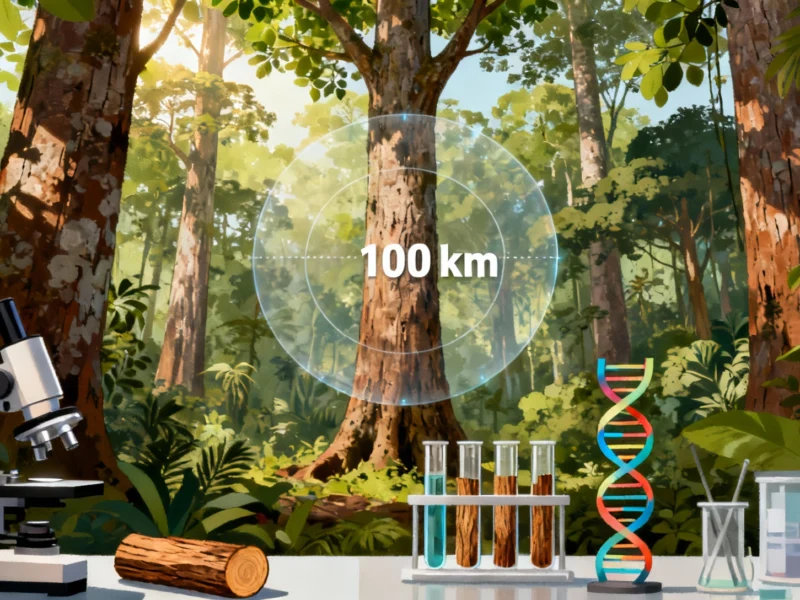Breakthrough in Timber Tracing
Researchers have developed a method that significantly improves detection of illegal logging by combining chemical and genetic analysis of wood, according to a new study from Wageningen University & Research and international partners. The technique can determine the origin of tropical hardwood with 94% accuracy within a 100-kilometer radius, sources indicate, addressing a critical need in combating the lucrative illegal timber trade.
The Scale of the Problem
Illegal timber trade represents a widespread criminal enterprise, often involving falsified documentation about wood origins. In several Congo Basin African countries, analysts suggest up to 90% of exported timber may be traded illegally. This extensive deforestation has prompted regulatory action, with the EU adopting the European Deforestation Regulation that will require timber traders to prove their products’ legal origins by late 2025 or 2026.
Research Methodology and Findings
The research team studied the African timber species Azobé, widely used in hydraulic engineering projects. According to reports, they analyzed nearly 250 trees from Central Africa, measuring concentrations of chemical elements like magnesium and calcium that reflect local soil conditions, additional chemical characteristics indicating regional climate, and genetic properties that vary with geographical distance.
When used individually, the report states each technique achieved 50-80% accuracy in pinpointing origin within 100km. However, by combining all three methods, researchers reportedly reached 94% accuracy. “Some wood properties are determined by conditions that differ only across large distances,” explained Barbara Rocha Venâncio Meyer-Sand, researcher at Wageningen University & Research and lead author. “Others vary more strongly between trees that grow close to each other. By combining them, the blind spots of one technique are compensated by the other two.”
Regulatory Implications
The timing of this research coincides with upcoming EU regulations requiring precise origin reporting for wood entering European markets. “This legislation requires that the exact origin of wood be reported when it enters the European market,” said Laura Boeschoten, Ph.D. graduate at Wageningen University & Research and lead author. “But because of frequent fraud, authorities must also be able to independently verify the origin. Our research shows that this verification can be highly accurate when different wood properties are combined.”
Collaborative Approach and Future Applications
Research leader Pieter Zuidema, professor at Wageningen University & Research, noted that combining techniques for origin determination remains in its infancy. “In recent decades, researchers have mainly focused on developing and promoting their own technique,” he stated. “We take a different approach: we compare and combine them. Of course, combining is costly and will in practice only be used for very valuable timber species or when risk of illegality is very high.”
The study, published in Communications Earth & Environment, resulted from intensive collaboration with researchers in the Congo Basin, including joint fieldwork and shared responsibilities. This collaborative model mirrors approaches seen in other scientific fields, from cloud computing performance to firmware development and AI chip design.
Broader Scientific Context
The interdisciplinary approach demonstrated in this timber research reflects broader scientific trends toward integration of multiple analytical methods. Similar collaborative efforts are advancing knowledge in diverse fields, from astronomy discoveries to agricultural technology and corporate innovation strategies.
This reporting is based on research findings and does not constitute original investigation. All claims and data points are attributed to the source material and researchers involved in the study.
This article aggregates information from publicly available sources. All trademarks and copyrights belong to their respective owners.

